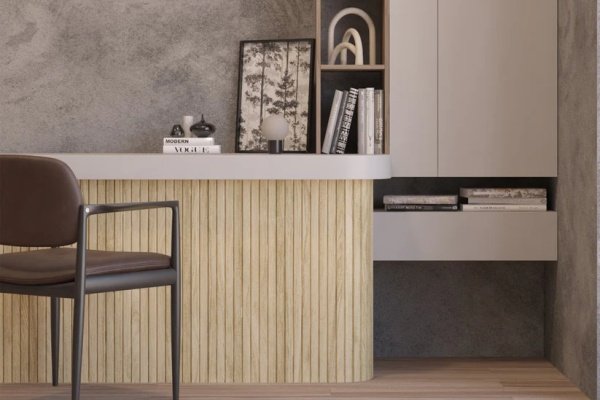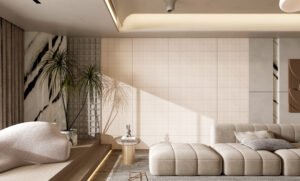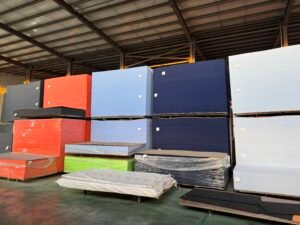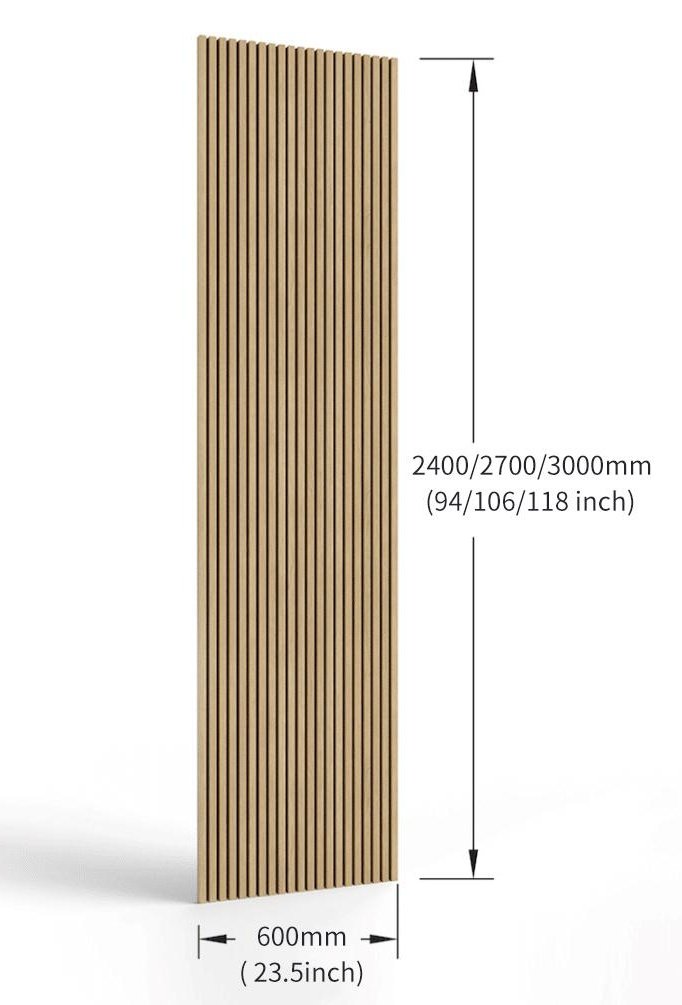Projects get delayed, budgets get stretched, and spaces feel outdated when wall panel design doesn’t keep up with the times. But you don’t want to get stuck with yesterday’s style.
Modern commercial tambour wall panel trends are all about texture, modularity, and natural finishes. Walnut tones, fluted profiles, and flexible designs lead the way in offices, hotels, and retail interiors.

modern tambour wall panel
If you’re renovating a workspace, managing a store chain, or outfitting a hotel, tambour wall panels are a strong choice. In this article, I’ll share the finishes designers are raving about, where they’re being used most often, and why flexibility matters more than ever.
Which Finishes and Textures Are Popular in Modern Tambour Panel Designs?
When designers pick the wrong finish, a space can feel flat or outdated. But with the right texture, a room becomes warm, stylish, and high-end.
Right now, fluted wood patterns, rich walnut tones, and matte black tambour panels are dominating commercial interiors. These textures bring depth, contrast, and a refined natural vibe to modern designs.

fluted tambour panel finish
There’s been a shift toward organic materials and layered textures. Here’s what I often see in projects our clients share with me:
Popular Tambour Finishes
| Finish Type | Description | Best Use Cases |
|---|---|---|
| Walnut Tambour | Rich brown wood grain with timeless appeal | Office walls, hotel lounges |
| Fluted Oak | Light oak with narrow grooves for a fresh, airy texture | Retail stores, creative studios |
| Black Ash | Matte black with subtle texture for a dramatic and modern aesthetic | Reception areas, restaurants |
| Grey Washed Veneer | Soft grey tone, blends industrial and Scandinavian styles | Meeting rooms, co-working spaces |
Texture Trends to Watch
- Micro-fluted panels: tighter grooves for a more refined, elegant wall pattern
- Mixed veneer panels: combining walnut and oak for contrast
- Textured matte finishes: reduce glare and enhance depth
These options aren’t just about looks—they also enhance acoustic performance and hide imperfections in existing walls. For commercial spaces, those are real advantages.
How Are Designers Using Tambour Panels in Commercial Spaces Like Offices, Hotels, and Stores?
Many commercial interiors suffer from bland drywall or cold industrial finishes. Tambour panels solve this by instantly adding warmth and structure.
Designers now use tambour panels to frame entrances, build custom reception backdrops, line corridors, and add statement walls behind counters or conference tables.

tambour panels in hotel and office
From what I’ve seen in client installs, tambour panels often act as the centerpiece of a room. They guide how people move through a space and help create brand identity—especially in high-traffic areas. Here’s how different sectors are using them:
Use Cases by Sector
| Sector | Use Case Example | Objective |
|---|---|---|
| Office | Tambour feature walls in meeting rooms or CEO offices | Create a calm, premium impression |
| Hospitality | Accent walls behind beds or reception desks | Add luxury and texture |
| Retail | Display wall backdrops and changing room entrances | Focus attention and elevate design |
| Restaurant | Paneling around banquettes and bar fronts | Warmth and visual rhythm |
I remember a recent client from Toronto who used fluted walnut panels across a coworking lobby—they told me it completely changed how people interacted with the space, making it feel more exclusive yet inviting.
Why Do Commercial Clients Prefer Flexible or Modular Tambour Wall Systems?
Commercial projects often face delays due to long installation times or materials that don’t fit the space. That’s where modularity and flexibility become game changers.
Modular tambour panels reduce on-site labor time, simplify alignment, and adapt easily to irregular walls or unique layouts. Clients love how quickly they can finish a space and move on.
In my experience, many of our B2B buyers are under pressure to deliver high-end results within tight timelines. So we engineered our tambour systems to be not only beautiful but practical:
Key Benefits of Modular Tambour Panels
| Feature | Why It Matters |
|---|---|
| Pre-finished panels | No need for on-site staining or painting |
| Standardized sizing | Ensures seamless joins and reduces cutting errors |
| Lightweight design | Easy for one person to handle, reducing labor costs |
| Flexible backing options | Can wrap around columns or curved walls |
| Interchangeable slat patterns | Mix designs without needing new substrates |
For example, a hotel group in Australia used our curved MDF-backed tambour panels to wrap an entire cylindrical elevator shaft. With traditional panels, that would have taken custom cutting and days of carpentry. Our flexible design saved them both time and money.
Conclusion
Commercial-grade tambour wall panels are evolving fast—richer textures, smarter installation, and more versatile designs are driving their popularity. For today’s interior projects, they’re not just a style choice—they’re a strategic one.










